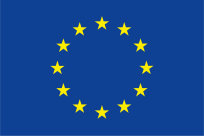Summary description
Protection and sustainable management of water was indicated as one of the strategic tasks in the process of transformation towards a circular economy (CE) in the European Union (EU), therefore, the water and wastewater sector plays an important role in this process. At the same time, the European Commission (EC) strongly underlined the importance of the possibility to assess the transformation process toward the CE, and developed a set of CE indicators that are available on the Eurostat website. However, these indicators have limited ability to assess the transformation progress in the water and wastewater sector. This paper presents a set of indicators for assessing the economic progress of transformation towards the CE in this sector. The proposed economic CE indicators were grouped into the following actions of the CE model in the water and wastewater sector: reduction, reclamation (removal), reuse, recycling, recovery and landfilling. The selection of specific indicators was based on a systematic review of the literature presenting economic indicators developed by international organisations and researchers (covering different thematic areas, scopes and potential applications). The selected economic CE indicators were assigned to three groups of the cash flow: income (revenues, expenses), costs, and investment financing. The proposed CE indicators can be used by water supply and sewage companies (i.e., supplying water to the public and wastewater treatment plants, and companies that use water in their production processes) to assess the level of the transformation toward the CE at a microeconomic level. An important aspect of future application and usage of the proposed set of CE economic indicators is the collection and processing of data needed for their reporting. The proposed set of CE economic indicators refers to information that are reported by the companies to prove its revenues, costs and investment outlays, and are collected by companies anyway. The proposed set of economic CE indicators is flexible, allowing the adaptation of indicators and areas of interest to maintain effectiveness throughout the transition period from linear to the CE model.
External links
License
Resources 2021, 10, 129. https://doi.org/10.3390/resources10120129

